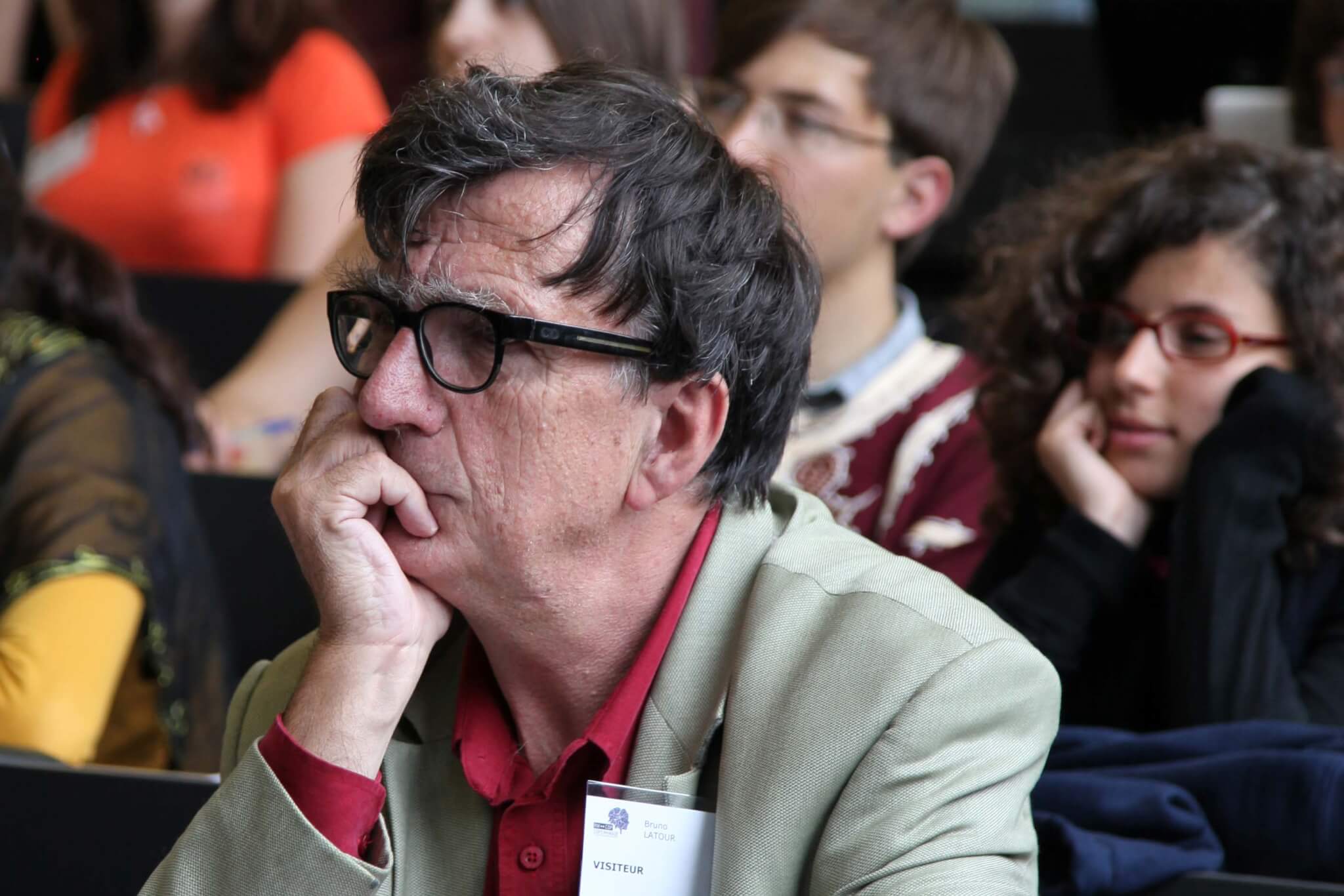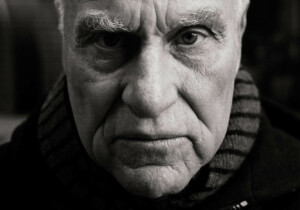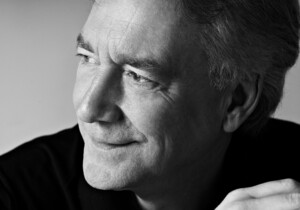French philosopher Bruno Latour left behind a trail of insights that is so deeply relevant to the field of design that it always felt like he was laying it out especially for the design disciplines. In recognition of these efforts, I would like to quote two of his most significant observations on design that remain urgent today.
The first is an epistemological observation that considers “objects” as such. In Latour’s 2005 book and exhibition catalogue entitled Making Things Public: Atmospheres of Democracy, his essay “From Realpolitik to Dingpolitik, or How to Make Things Public,” celebrated the vital role of objects in an increasingly complex world:
It’s clear that each object—each issue—generates a different pattern of emotions and disruptions, of disagreements and agreements. There might be no continuity, no coherence in our opinions, but there is a hidden continuity and a hidden coherence in what we are attached to. Each object gathers around itself a different assembly of relevant parties. Each object triggers new occasions to passionately differ and dispute. Each object may also offer new ways of achieving closure without having to agree on much else. In other words, objects—taken as so many issues—bind all of us in ways that map out a public space profoundly different from what is usually recognized under the label of “the political.” It is this space, this hidden geography that we wish to explore.
As seen in the bolded lines above, rather than extracting architectural objects from their context in order to fetishize their unique qualities, Latour helped us to see that the power of objects lies within their native networks. Championing his invention, Actor Network Theory, he argued that objects carry both a human and non-human constituency, revealing an underlying continuity and coherence among these constituents that had previously gone unnoticed.
This mediation of complex problems by objects themselves has never carried greater significance than in a world where the climate crisis is understood as an abstract idea. All the executive summaries, lectures, legal documents, speeches, documentaries, and climate books have failed us. Latour suggested that, by translating those abstractions into a common object, a complex consensus can be pursued.
The network of “actants” surrounding an object as common as a river, for example, could be completely ignored until the moment that it begins to dry up. In this case, a diminished flow triggers a response of typically unrelated economic, environmental, and aesthetic interests—local utilities, fishermen, ecologists, tourists, hydrologists, homeowners, municipal water districts—all gaming for advantage. Add to these constituents the non-human representatives who make up the river’s ecosystem in the first place—the lithosphere, the hydrosphere, the biosphere, and the atmosphere. As Latour wrote, “Objects—taken as so many issues—bind all of us in ways that map out a public space profoundly different from what is usually recognized under the label of ‘the political.’” The river abides.
Similarly, architectural and urban objects possess no fewer constituents than a river, at least when their complex networks are sufficiently disclosed. Like the river, they can also provoke unique ways of “achieving closure without having to agree on much else.” Latour insists that “the object gathers around itself a different assembly of relevant parties.” Abstractions such as United Nations reports, movies, or white papers assemble only limited and temporary constituencies compared to the objects that create our world. And as this world grows more maddeningly complex, objects will be fully enlisted for their ability to embody these complexities and make them actionable.

The gathering capacity of urban objects brings up a second insight that Latour laid out for architects and urban designers, which concerns the transformational status of design in an age of climate disruption. Beginning with Politics of Nature: How to Bring the Sciences into Democracy, Latour attempted to suture the yawning divide between critical theory and the political engagement with our environmental problems. For Latour, what will ultimately transform design’s status is the elevated role that it will play in the drama of our species’ survival. As a historian of technology, Latour spent a career calculating the risks and rewards of modernism’s uncritical embrace of technology. When it came to climate, however, any retreat from modernism’s commitment to technology was never a serious option. Latour held this position despite his own informed misgivings, as well as the distrust of the environmental community. In a 2009 essay, “Will non-humans be saved? An argument in ecotheology,” he wrote (with characteristic compassion) that
there is something deeply troubling about many ecological demands suddenly to restrict ourselves and to try to leave no more footprints on a planet that we have nevertheless already modified through and through. It appears totally implausible to ask the heirs of an emancipatory tradition to convert suddenly to an attitude of abstinence, caution, and asceticism—especially when billions of other people still aspire to a minimum of decent existence and comfort… It might not be the time to sound the retreat, and to betray the progressivist ethos of modernism by suddenly becoming ascetics. If modernism was Promethean, the massive acceleration of a clean economy and clean technologies scientists argue is needed would be Prometheus squared… And yet, it is still unquestionable that there is something deeply flawed in the hubristic tone of so much hype about technological solutions to ecological crises. Is there a way to explore a positive, energetic, innovative set of passions to repair and pursue the modernist experience at a more fundamental level? Can we imagine a Doctor Frankenstein who would not flee in horror at the creation, at the creature he bungled at first, but a Frankenstein who goes back to his laboratory? Can Prometheus be reconciled with the seemingly antithetical notions of care and caution?
Besides being a salutary rejection of the ascetic, no-growth movement (and of the grotesque human suffering it would unleash), Latour suggested that the emancipatory tradition of modernism drives us toward “massive acceleration of a clean economy and clean technologies.” This acceleration will require us to review modernism’s legacy—and the monsters it created—in order to reform it through the lens of our recent environmental calamities. Given the scale of these challenges, he noted that we have little choice but to expand design beyond the limitations of small-scaled, tactical interventions and resume the large-scale Promethean experiments that were once the hallmark of the modern project. This call for technical acceleration (“Prometheus squared”) leads the design disciplines in several directions, primary among them being a reconsideration of the modern urban project. Given the many monsters produced by modern urban experimentation, the questions Latour asked are difficult ones. Are the design disciplines capable of imagining “a Doctor Frankenstein who would not flee in horror at the creation, at the creature he bungled at first, but a Frankenstein who goes back to his laboratory? Can Prometheus be reconciled with the seemingly antithetical notions of care and caution?”
A new round of experimentation in modern urbanism would begin with a close reading of the specific problems that modern urbanism addressed (and that we still face) and the manner in which it succeeded or failed to solve them. Following the German philosopher Peter Sloterdijk, Latour claimed in We Have Never Been Modern that modern urbanism never had a revolutionary agenda. Instead, it took on a much more modest goal of describing or “explicating” the difficult prospects of a human existence in a recklessly technical age. Regarding design, that explication took on the form of (marginal yet important) experimental projects and buildings. A return to the abandoned laboratory of modern urbanism would build upon established experiments in urban density, mass housing, and alternative building materials and transit infrastructures in order to project an urban environment that is capable of reducing our carbon emissions within the range of two degrees Celsius of surface warming. What Latour’s work proposes is that each urban projection would gather “around itself a different assembly of relevant parties. Each (projection) triggers new occasions to passionately differ and dispute. Each (projection) may also offer new ways of achieving closure without having to agree on much else.”
Bruno Latour gave these observations, and more, to design. (For his most explicit recommendations see his keynote “A Cautious Prometheus? A Few Steps Toward a Philosophy of Design [with Special Attention to Peter Sloterdijk]” from 2008.) Regarding the built environment, he gave urban objects a transformational role in understanding and solving our overwhelming environmental problems. One hopes that his passing will renew attention to his provocations and that his challenges to the discipline will be taken up with the spirit and vigor with which they were delivered.
Albert Pope is the Gus Sessions Wortham Professor of Architecture at Rice Architecture. He teaches in the school’s Undergraduate and Graduate Program and is currently the director of the school’s Present/Future program.











